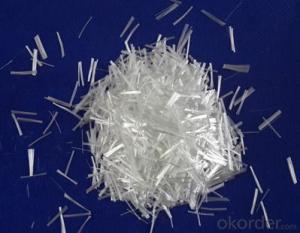Fiberglass woven cloth, a material that has silently revolutionized the industrial world, is a fabric woven from fine fibers of glass. Known for its high strength-to-weight ratio, durability, and resistance to various environmental factors, it has become a go-to solution for many industries. Let’s dive into the world of fiberglass woven cloth and explore its applications, benefits, and how it’s made.
The Birth of a Material
Fiberglass woven cloth traces its origins back to the early 20th century. It was during this time that researchers discovered that glass fibers could be spun into a fabric-like material. The first patent for fiberglass was granted in 1938, and since then, it has been continuously improved and adapted for various uses.
A Versatile Fabric
One of the most striking features of fiberglass woven cloth is its versatility. It can be found in everything from construction to aerospace, from marine to automotive industries. Its applications are as diverse as the industries it serves. Let’s take a closer look at some of these applications:
– Construction and Infrastructure: Fiberglass is used in reinforcing concrete and strengthening structures against earthquakes and other natural disasters.
– Aerospace: In the aerospace industry, it’s used for its lightweight and high-strength properties, making it ideal for aircraft components.
– Marine: Boats and ships benefit from fiberglass due to its resistance to water, corrosion, and marine life.
– Automotive: Cars and trucks use fiberglass for body panels, engine components, and even in the production of electric vehicles.
The Making of Fiberglass Woven Cloth
The process of making fiberglass woven cloth is a blend of art and science. It begins with the creation of glass fibers, which are then woven into a fabric. The fibers are made by melting glass and then drawing it out into thin strands. These strands are then woven together to create the cloth. The process is carefully controlled to ensure the cloth’s quality and consistency.
Benefits Galore
Fiberglass woven cloth offers a plethora of benefits that make it an attractive choice for industries. Some of these benefits include:
– Strength: It has a high tensile strength, making it capable of withstanding significant stress.
– Lightweight: Being lightweight, it contributes to fuel efficiency in vehicles and reduces the load on structures.
– Corrosion Resistance: It doesn’t rust or corrode, making it perfect for environments where metals would deteriorate.
– Electrical Insulation: It provides excellent insulation properties, which is crucial in electrical applications.
– Thermal Insulation: It also offers thermal insulation, making it suitable for applications where temperature control is necessary.
The Environmental Impact
While fiberglass woven cloth has many advantages, it’s essential to consider its environmental impact. The production process can be energy-intensive, and the disposal of fiberglass waste can be challenging due to its durability. However, efforts are being made to recycle and repurpose fiberglass, reducing its environmental footprint.
Innovations and the Future
The future of fiberglass woven cloth looks promising, with ongoing research and development aimed at enhancing its properties and finding new applications. Innovations in nanotechnology and composite materials are expected to further improve the performance of fiberglass woven cloth.
A Fabric of Many Faces
Fiberglass woven cloth is more than just a material; it’s a testament to human ingenuity and our ability to create solutions from the most unexpected sources. As we continue to push the boundaries of what’s possible, fiberglass woven cloth will undoubtedly play a significant role in shaping the future of various industries.
Conclusion
In conclusion, fiberglass woven cloth is a fabric that has woven its way into the fabric of our industrial society. Its versatility, strength, and numerous benefits make it an indispensable material for a wide range of applications. As we look to the future, let’s appreciate the role this fabric plays in our lives and the potential it holds for innovation and progress.

